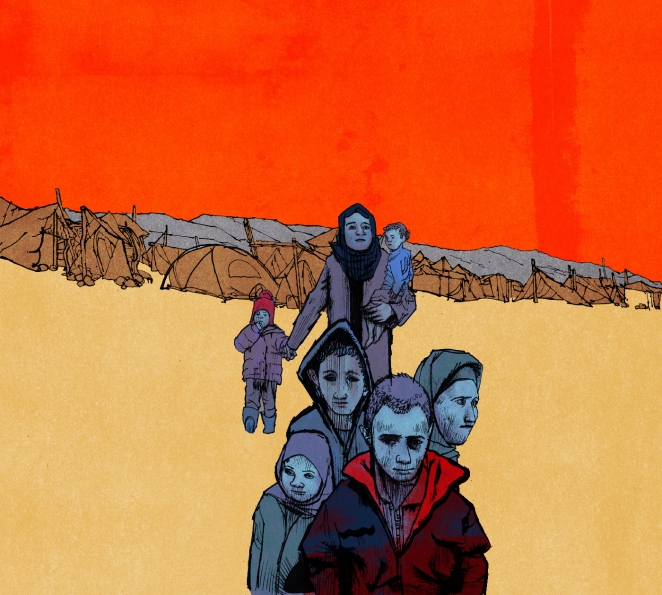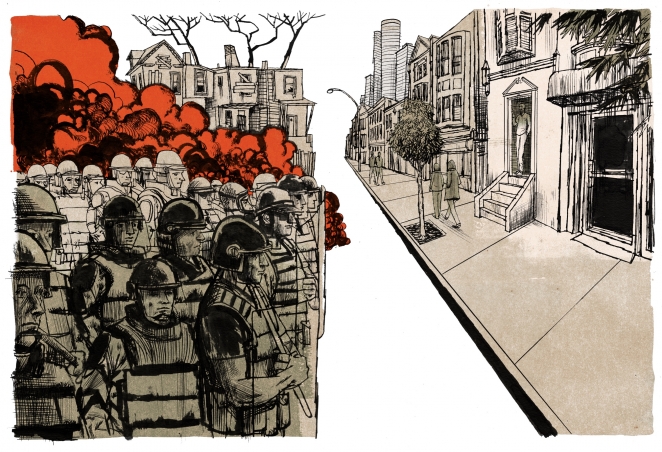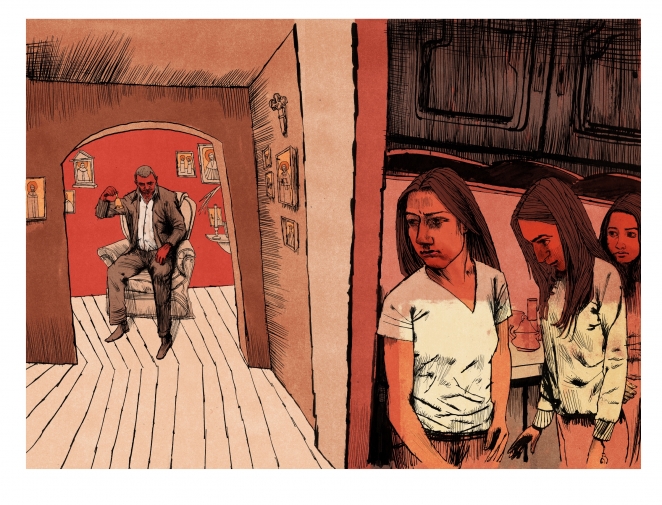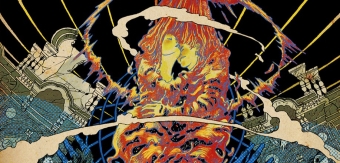Matt Rota has been an illustrator for over 15 years now, and his crude (in the most positive sense possible), visionary imagery is something you will not forget in a hurry.
Matt admits to spending "lots of time" on Instagram to get inspired, which is admittedly what a lot of visual artists should do these days. As obvious as it sounds as advice, many don't do it due either to the fear of comparison or simply preferring other more obtuse forms of inspiration.
You should always do what works best for you, of course; but if Instagram inspiration leads to the kind of stunning illustrations you can see below, perhaps spending some more time on social media for inspiration is worth it, after all.
In this Member Spotlight, we are learning more about Illustrator Matt Rota and his outstanding body of work.

How did you get into the industry?
I’ve been in the illustration world now for over 15 years. I studied fine art and illustration at The Maryland Institute College of Art, and spent about three years after sending my work around. I had a few pieces published by small magazines before getting a call from the NY Times to work on an Op-Ed illustration. They became my first and most consistent client over the years.
Where are you based now and who do you work for?
I’m Based in Brooklyn. I Teach, at SVA, am a senior curator at artreprenuer.com and maintain a busy freelance schedule with recent clients including Harpers, Foreign Policy, The New York Times Book Review and Politico, amongst others.

If you weren’t in your current industry, what would you be doing?
Honestly I can’t imagine.
Can you explain your creative process? What makes it unique?
Process and experimentation are important. Most of my printed work starts in Pen and ink and is colored digitally. I keep extensive sketchbooks where i play with a wide range of materials, different pens and inks, water color, gouache, colored pencils. I’m always trying new things, trying to make images in new ways.
I like the challenge of not knowing how to do something and figuring out, making things that I don’t know what the result will be, building something with no direction in mind just to see where it goes. I also read a lot, lots of action and history that informs a lot of the work I make.

How would you describe your style?
I’m really influenced by expressionist art, the kind of stuff that was happening in Germany between the wars. Ottot Dix, George Grosz, Kathy Kollwitz, Karl Arnols, Eward Thony. There was a lot of crossover with those artists between illustration and fine art.
I don’t know that my art resembles those artists but it evolved out of me imitating some of their drawing and color ideas. similarly I’ve spent a lot of time looking at the Bay Area figure painters, David Park, Nathan Oliveira, Elmer Bischoff and have pulled a lot of style and influence from them.
Which individuals do you gain inspiration from? Do you have any heroes in the industry?
I mentioned above a lot of artistic Influences, though I think they are all dead now. The illustrators I was looking at when I was younger, in high school and college, the people that made me want to become an illustrator were people like Alan Cober, Sue Coe, Marshal Arisman, Francis Jetter, Kent Williams, Dave Mckeon.
One of my favorites in college was Henrik Drescher. They were all people that made illustration seem like an exciting field that rewarded artists who took risks. It felt like sophisticated time for the industry.

What tips would you give to aspiring creatives looking for work?
Make a lot of work, make a lot of work that you are interested in. Don’t make work that fits in with the market as you see it, but make work for the industry as you WISH it were WANT it to be.
What tips would you give to other professionals to get more clients?
I wouldn’t, most professional illustrators know what they are doing, and are doing it pretty well. I don’t know of anyone working that needs me to tell them how to do anything better. I save all of that advice for my students.

What kind of tools/kit/software could you not do without?
Pen, Ink Paper, Scanner and Photoshop.
What’s your secret to staying inspired and motivated?
It’s not really a secret, I spend lots of time on Instagram. There ton’s of new and interesting work up there all the time. Tonne’s of old interesting work too. I have more ideas than I have time to realize already, so I’ve never really had a period were I’ve felt bored or uninspired, there’s not really enough hours in the day for that.

What’s the work achievement you’re most proud of?
I like when I get to work on long series, I don’t know if I’m more proud of any one thing. Earlier this year I did a series for Foreign Policy on the anniversary of Syrias revolution that I was happy with. I just finished an illustrated edition of the Dubliners that also felt pretty good.
Over the years I’ve done some long form stories with ProPublica that were really compelling. Their writing tends to be excellent, the research is always in depth, and I feel like I'm able to make some strong imagery to support it. One in particular was on Firestone tires support of the Liberian Genocide in the 90’s.
Those are some of the pieces I like the most, working on something with really intelligent, well research topics where I have a space to visualize the story over a series of images.
What is the one thing that you would change about the industry?
More diversity, diversity in people as well as styles. The field has become more conservative in the last two decades, particularly in this last decade. Artists sense that they will get more work if they work within a more narrow, clean conservative range of styles, clients reward that perspective.
Safe, familiar, conservative visual styles are the norm. Which seems out of step with where we are at in the world right now. As much as I like it, I think Instagram is a big contributor to that, the validation of fishing for likes and followers pulls people into a common middle ground. I think looking at an artist’s following sways what people think of as good.
We all trust in numbers more than our own instincts, so I think it’s not even a matter of gravitating towards what’s popular for the sake of popularity, but how the gravitational pull of one artists popularity, or one styles popularity makes other artists question their own ideas and taste. Instagram and social media can crush peoples confidence and individuality that way.
Any websites, books or resources you would recommend?
My Favorite Blog is Monster Brains. If you like truly visionary, weird art from all era’s, you will enjoy it. Endless inspiration.
Business wise, I contribute to the Artreprenuer site Art Business Journal, and to their Creative Careers podcast, where I get to talk with illustration professionals.






